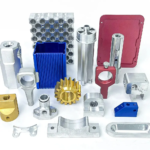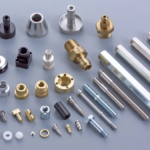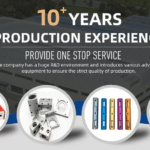Mastering the Art of Machining: An In-Depth Guide to CNC and Vertical Machining Centers
In the world of manufacturing, precision and efficiency are key to producing high-quality products. That’s why machining has become an essential process in various industries, from aerospace to automotive. In this blog post, we’ll delve into the world of Computer Numerical Control (CNC) and vertical machining centers, exploring their benefits, features, and applications.
What is a CNC Machining Center?
A CNC machining center, also known as a Computer Numerical Control machine, is a highly advanced production machine that uses computer-controlled, programmable instructions to operate a variety of machine tools, such as milling, drilling, and grinding. This technology has revolutionized the manufacturing industry by enabling the production of complex parts with high precision and accuracy.
A CNC machining center typically features:
- A machining center that can perform multiple tasks, such as milling, drilling, and grinding
- An automatic tool-changing system, allowing for quick tool replacement
- A digital control system that programs and executes machining operations
- A large worktable or spindle, accommodating various workpieces
These machines can process a wide range of materials, including metals, plastics, and composites, and are commonly used in industries like aerospace, automotive, medical devices, and consumer products.
What is a Vertical Machining Center?
A vertical machining center is a type of CNC machining center specifically designed for processing complex parts with three or more axes of motion. It is commonly used for manufacturing parts with unique shapes, such as molds, dies, and prototypes.
Key features of a vertical machining center include:
- A vertical spindle or ram, allowing for easy access to the workpiece
- A large range of movements, including X, Y, Z, and B axes
- High-speed spindle speeds, often exceeding 18,000 RPM
- Precise control and accuracy, ensuring micron-level repeatability
Benefits of CNC and Vertical Machining Centers
The benefits of CNC and vertical machining centers are numerous, including:
- Improved accuracy and precision, ensuring high-quality products
- Increased productivity and efficiency, as machines can operate around the clock with minimal human intervention
- Reduced labor costs, as operators can focus on more value-added tasks
- Enhanced flexibility, as machines can be programmed to perform multiple tasks and produce a wide range of products
- Improved product quality, as CNC machines can accurately replicate complex designs and geometries
Classification of Vertical Machining Centers
Vertical machining centers can be classified in various ways, including:
- Rail type: Hard rails are suitable for heavy-duty cutting, while linear rails are more sensitive to movement.
- Speed: Vertical machining centers can operate at speeds ranging from 6,000 to 15,000 RPM, with high-speed types exceeding 18,000 RPM.
- Structure: Vertical machining centers can be categorized into two main types: bed-type and gantry-type.
Conclusion
CNC and vertical machining centers have revolutionized the manufacturing industry, offering unparalleled precision, accuracy, and efficiency. By understanding the features, benefits, and classifications of these machines, manufacturers can optimize their production processes, improve product quality, and stay competitive in their respective markets. Whether you’re a manufacturer, engineer, or enthusiast, this guide has provided a comprehensive overview of the world of CNC and vertical machining centers.










